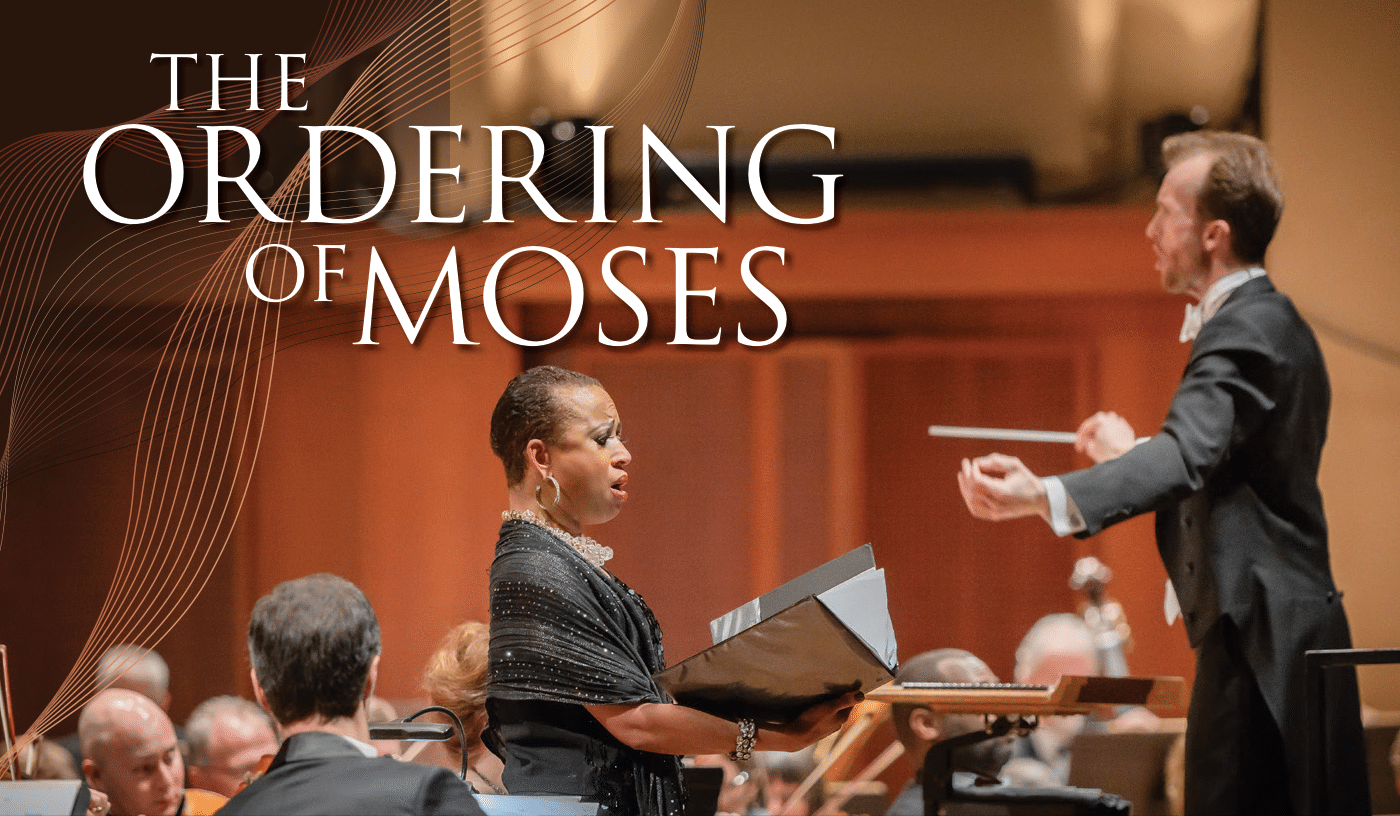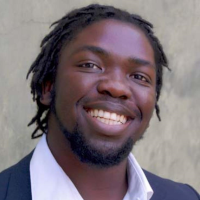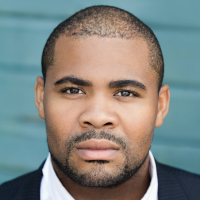
Saturday, May 4, 2024 • 7:30 p.m.
First Free Methodist Church (3200 3rd Ave W)
Harmonia Orchestra & Chorus
William White, conductor
Marques L.A. Garrett, conductor
Kimberly Jones, soprano
Cheryse McLeod Lewis, mezzo-soprano
Namarea Randolph-Yosea, tenor
Nicholas Davis, baritone
The Sound of the Northwest • Elias Bullock, director
Program
Samuel Coleridge-Taylor (1875—1912)
“La caprice de Nannette” from Petite suite de concert, Op. 77
Antonín Dvořák (1841–1904)
Largo from Symphony No. 9, Op. 95
— intermission —
R. Nathaniel Dett (1882–1943)
The Ordering of Moses [Northwest premiere]
About the Concert
The Ordering of Moses is one of the truly great American oratorios, a richly scored work for soloists, choir and orchestra, built around African-American spirituals.
- Plan to arrive early and join Will White and Marques Garrett for a 6:30 p.m. pre-concert conversation.
Maestro’s Prelude
Welcome to the grand finale of Harmonia’s 2023–2024 season! I like to think each concert is an “event,” but it’s good form to save something extra special for the end, and Saints Alive have we got something special for you tonight!
The Ordering of Moses is an American oratorio that has a special place in music history. Its composer, Nathaniel Dett, was a pathbreaking musician, earning a bachelor’s degree from Oberlin College and likely the first Black musician to create a piano roll (and in a work of his own composition, no less). Dett was born near Niagara Falls, Canada, but his family moved to the U.S. side of the border in 1893 when he was 11 years old. That was the same year that the Czech composer Antonín Dvořák heard the premiere of his “New World” symphony in New York City, a work in which he offered to American-born composers an example of what a European-style composition could sound like if it were based upon the melodies of Native American dances and African-American spirituals.
Dvořák was not the only European composer to evince a fascination with America’s native musical and cultural heritage. The English composer Samuel Coleridge-Taylor made several trips to the U.S., the first of which (in 1904) included a visit with Theodore Roosevelt at the White House.
Dett looked upon both Dvořák and Coleridge-Taylor as musical heroes. “The most vivid and far-reaching memory I have of Oberlin,” he wrote, was “the famous Kneisel String Quartet [playing] a slow movement by Dvořák, based on traditional airs. Suddenly it seemed I heard again the frail sweet voice of my long departed grandmother, calling across the years; and, in a rush of emotion which stirred up my spirit to its very center, the meaning of the songs which had given her soul such peace was revealed to me.”
Dett’s oratorio received its world premiere by the Cincinnati Symphony Orchestra in 1937. After its debut, the piece languished, being performed only a handful of times during the next several decades. That trajectory took a sharp turn in 2014 when the Cincinnati Symphony revived the piece for a modern “re-premiere.” I happened to be the CSO’s assistant conductor at the time, and I’ve remained fascinated by the work ever since, which is why I’m so glad I could bring it to Harmonia.
I won’t be conducting the piece tonight (although I hope to do so someday!) because my friend Marques Garrett is one of the leading experts on Dett and his music, so I thought it only fitting that he should be the one to introduce this work to the Pacific Northwest. This project has turned out to be a most fruitful collaboration, involving four superb soloists as well as the remarkable Sound of the Northwest, a choir specializing in African-American spirituals.
I could think of no more beautiful way to end our season, and I am so glad you are here to be a part of it.
— William White
Guest Artists

A Virginia native, Marques L.A. Garrett is Associate Professor of Choral Studies at the University of North Texas. He earned his Ph.D. in Music Education (Choral Conducting) at Florida State University. Dr. Garrett is the founding artistic director of the Nebraska Festival Singers and has served as a guest conductor and clinician with numerous school, church, community and festival/honor choirs throughout the country. Possessing a versatile voice that performs both as a baritone and countertenor, Dr. Garrett has sung with several community, church and university groups as both a chorister and soloist, including the countertenor solos in the European premiere of Dan Forrest’s Jubilate Deo in Limerick, Ireland. Currently, he sings with the Festival Singers of Florida and Jason Max Ferdinand Singers. Dr. Garrett is an avid composer of choral and solo-vocal music whose compositions have been performed to acclaim by high-school all-state, collegiate and professional choirs, including Seraphic Fire and the Oakwood University Aeolians.
- Learn more: mlagmusic.com

Soprano Kimberly E. Jones is an alumna of the Ryan Opera Center with Lyric Opera of Chicago. Her performances with Lyric include Margru in the world premiere of Anthony Davis’ Amistad, Olga in Fedora, Princess Xenia in Boris Godunov, Pedro in Don Quichotte, and Despina in student matinee performances of Così fan tutte. She portrayed Laetitia in The Old Maid and the Thief with the Ryan Opera Center and appeared in Lyric’s “Opera in the Neighborhood,” including Rosina in The Barber of Seville and the title role of Cenerentola. She has also sung at Grant Park as Zerlina (Don Giovanni) and Adele (Die Fledermaus), and on WFMT’s Live from Studio One. Outside of Chicago, she has sung Clara in Houston Grand Opera’s international production of Porgy and Bess, for which she was nominated for an NAACP Award for Best Supporting Actress. Ms. Jones soloed in Philip Glass’ Symphony No. 5 at the Gewandhaus in Leipzig under the direction of Dennis Russell Davies, and was one of four Ryan Opera Center artists showcased in a series of concerts at the Châtelet in Paris. She captivated audiences in her Alice Tully Hall debut with the Little Orchestra Society and appeared with Leon Williams at the Bruno Walter Auditorium at Lincoln Center for an evening of Porgy and Bess solos and duets. The recipient of numerous awards, Ms. Jones is on the voice faculty at Roosevelt and DePaul Universities.
- Learn more: kimberlyejonessoprano.com

Mezzo-soprano Cheryse McLeod Lewis, a native of Greensboro, North Carolina, enjoys a diverse career in opera, musical theater, concert, commercial, print and voiceover. She made her Spoleto Festival USA debut in 2022 as The Mother (Fatima) in the world-premiere production of Omar (an opera by Rhiannon Giddens and Michael Abels that won the 2023 Pulitzer Prize in Music), a role that she reprised at Carolina Performing Arts in February 2023. Other recent role highlights include Bess Understudy/Ensemble Swing in the first National Broadway Tour of The Gershwins’ Porgy and Bess, Girlfriend 3/Congregant 3 in Blue (Seattle Opera); Carmen in Carmen (Asheville Lyric Opera, Capital Opera Raleigh), Rosina in Il barbiere di Siviglia (Asheville Lyric Opera, Mansfield Symphony, Central Georgia Opera Guild), Hansel in Hansel and Gretel (Connecticut Opera, Greensboro Opera), The Mother in Amahl and the Night Visitors (Opera Carolina, Connecticut Opera), Cinderella’s Stepmother in Into the Woods (Village Theatre), and Annie in Porgy and Bess (Seattle Opera). On the concert stage, Ms. Lewis has appeared with Kirkland Choral Society, Eugene Concert Choir, Eastern Music Festival, Greensboro Symphony, Master Chorus Eastside and Greensboro Oratorio Society.
- Learn more: cherysemcleodlewis.com

South Sudanese–American tenor Namarea Randolph-Yosea completed his Bachelor of Music at Western Washington University in 2019 and in 2022 earned a Master of Music in Vocal Performance at the University of Houston under the tutelage of Melanie Sonnenberg. On the concert stage, he was recently featured as soloist in Bach’s BWV 141 with the Mercury Chamber Orchestra, and in Adolphus Hailstork’s cantata I Will Lift Up Mine Eyes with Choral Arts Northwest. He has sung the Mozart Requiem with the WWU Symphony and Margaret Bonds’ The Ballad of the Brown King with Seattle Choral Company, as well as Bach’s Magnificat and the Evangelist in Bach’s Christmas Oratorio with Kirkland Choral Society. On the operatic stage, Mr. Randolph-Yosea recently sang Ernesto in Donizetti’s Don Pasquale with Union Avenue Opera, in which he wowed audiences with his “velvet smooth and sweet, sweet, sweet” instrument (Broadway World). He was selected for the 2023 Gerdine Young Artist program at Opera Theatre of Saint Louis, singing the role of Cephus in Treemonisha, participated in the inaugural OTSL New Works Collective, performing the role of X in Madison Lodge, and was selected as an apprentice artist at Des Moines Metro Opera for its 50th anniversary season.

Baritone Nicholas Davis recently made his role and company debut singing Marcello in Puccini’s La bohème and Leader in Weill’s Lost in the Stars with Annapolis Opera, and returned to Minnesota Opera for Paola Prestini’s Edward Tulane, based on the novel by Kate DiCamillo. He debuted with Houston Grand Opera in the world premiere of Jeremy Beck’s Another City and sang the title role in Le nozze di Figaro with Knoxville Opera. For Volcano Productions in Toronto, he performed Ned in Scott Joplin’s Treemonisha (in a production that will tour the United States in 2025). Mr. Davis has also performed at Seattle Opera, Santa Fe Opera, Chicago Opera Theater, Michigan Opera Theater and Glimmerglass Opera. In concert, he appears this season as the baritone soloist in Orff’s Carmina Burana with the Eugene Concert Choir. He has previously performed with the Berkeley Symphony (as soloist in Beethoven’s Ninth), Jackson Symphony, Kentucky Symphony (as Abimélech in Saint-Saëns’ Samson et Dalila), Karlovy Vary Symphony, Fort Street Symphony (as bass soloist in Handel’s Messiah), National Theater of Prague Orchestra and Chicago Sinfonietta.
The Sound of the Northwest is a community choir founded in 1987 by Juan Huey-Ray for the purpose of preserving and presenting the music of the Black American heritage, particularly the Negro Spiritual. It is one of a small number of choirs nationwide that focus on a repertoire of African-American Spirituals, and the only such choir in the Seattle area. The Sound of the Northwest strives to enrich the lives of diverse, multi-generational and multi-cultural audiences and artists. It has a rich history of performing for a wide range of audiences in schools, concert halls, civic centers and churches of many different denominations. A common feature of Sound of the Northwest appearances has been educational commentary, story-telling and audience participation, encouraging unity among diverse audience members, stirring pride in the artistic contributions and resilience of the African American community, and providing insight into the African-American experience in a way that fosters empathy and understanding. The Sound of the Northwest has delighted audiences throughout the Puget Sound region with concerts that bring joy to the heart, a clap to the hands, a tear to the eye, and a stomp to the feet. The typical menu of a program by The Sound includes an entrée of Negro Spirituals sung a cappella and seasoned with anecdotes for flavor, augmented with side dishes of dance or poetry, and topped off with a generous dessert of Gospel. It is truly a “soul food” meal designed to uplift and strengthen the spirit. In February 2012, The Sound’s entrée in an Ensemble Spotlight at Carnegie Hall was seasoned with spontaneous applause and topped off with a standing ovation from a capacity audience.
Program Notes
Samuel Coleridge-Taylor
“La caprice de Nannette” from Petite suite de concert
Coleridge-Taylor was born in London on August 15, 1875, and died there on September 1, 1912. He composed his four-movement Petite suite de concert around 1911 both for solo piano and orchestra, scoring the latter for pairs of woodwinds (plus piccolo), 4 horns, 2 trumpets, 3 trombones, timpani, percussion, harp and strings.
The son of an Englishwoman and a Sierra Leonean doctor, Samuel Coleridge Taylor gave a violin recital at age 8, sang in a boychoir, and enrolled at the Royal College of Music at age 15, studying composition with Charles Villiers Stanford. His family called him “Coleridge,” but a printing error in a concert program purportedly led to him hyphenating his name for professional use. Antonín Dvořák was a major influence, including on the subject matter of his 1898 cantata Hiawatha’s Wedding Feast, which helped him gain fame (and which was performed regularly over the next few decades by English choral societies). Sir Arthur Sullivan wrote of the work: “Much impressed by the lad’s genius. He is a composer, not a music-maker. The music is fresh and original.” Coleridge-Taylor would visit the United States three times (in 1904, 1906 and 1910) before his death from pneumonia at age 37.
Little is known about the circumstances surrounding the composition of Petite suite de concert, but the first movement, “La caprice de Nannette,” brings to mind the spirit and rhythms of Dvořák’s Slavonic Dances while remaining firmly rooted in the tradition of British Light Music.
Antonín Dvořák
Largo from Symphony No. 9 in E minor
Dvořák composed his ninth symphony between January 10 and May 24, 1893. Anton Seidl conducted the New York Philharmonic in the first performance on December 15 of that year. The score calls for pairs of woodwinds (with one flute doubling piccolo and one oboe doubling English horn), 4 horns, 2 trumpets, 3 trombones, tuba, timpani, triangle, cymbals and strings.
Antonín Dvořák arrived in New York in October 1892 to become director of the National Conservatory of Music. He then began work on an E-minor symphony that would occupy him during the first five months of 1893. Dvořák offered the premiere to Hungarian conductor Anton Seidl and the New York Philharmonic, hastily adding a subtitle, “From the New World.” The premiere was an unparalleled success. “Any one who heard it could not deny that it was the greatest symphonic work composed on American soil,” Henry Finck wrote in the New York Evening Post.
In interviews, Dvořák discussed his study of indigenous American music, but cautioned: “It is merely the spirit of Negro and Indian melodies which I have tried to reproduce in my new symphony. I have not actually used any of the melodies.” Harry Burleigh, an African-American student at the Conservatory who befriended Dvořák, helped familiarize him with spirituals and plantation songs, but the Czech composer’s only exposure to Native-American music had come from attending Buffalo Bill’s Wild West show.
Dvořák told the New York Herald that the second movement “is in reality a study or a sketch for a longer work, either a cantata or an opera which I propose writing, and which will be based on [Henry Wadsworth] Longfellow’s Hiawatha,” which Dvořák knew from a Czech translation. He told Henry Krehbiel that “Hiawatha’s Wooing” (Chapter 10 of the Longfellow poem) inspired the movement; the famous English horn theme may have represented the homeward journey of Hiawatha and his bride Minehaha. The composer originally assigned the melody to solo clarinet, but eventually opted for English horn because it more closely resembled the timbre of Burleigh’s voice. The funeral march of the central section, according to Burleigh, represented “the famine scene” in Hiawatha. “It had a great effect on [Dvořák] and he wanted to interpret it musically.”
R. Nathaniel Dett
The Ordering of Moses
Robert Nathaniel Dett was born October 11, 1882, near Niagara Falls, and died October 2, 1943, in Battle Creek, Michigan. He composed The Ordering of Moses over the span of a decade preceding its premiere at the Cincinnati May Festival under the direction of Eugene Goosens on May 7, 1937. In addition to SATB vocal soloists and choir, the score calls for pairs of woodwinds (plus piccolo), 4 horns, 2 trumpets, 3 trombones, tuba, timpani, percussion, harp, organ and strings.
Nathaniel Dett grew up in Drummondville, Ontario, a town founded by people who had escaped slavery in the United States. He began piano lessons at age 5, continuing his studies when his family moved to the U.S. side of the border in 1893. After earning a degree from the Oberlin Conservatory in 1908, he taught at colleges in Tennessee and Missouri before taking a position at the Hampton Institute (now Hampton University) in Virginia in 1913, where he led the Hampton Singers, eventually (in 1926) becoming director of the music department.
In 1931, Dett moved to Rochester, New York, enrolling at the Eastman School of Music. At the end of that academic year, he submitted a score for an oratorio, The Ordering of Moses, as part of his master’s thesis. In 1937, the year that work was premiered, he took a position at Bennett College in Greensboro, North Carolina. After the outbreak of World War II, Dett joined the USO and died of a heart attack while on tour with a USO chorus in Michigan.
Guest conductor Marques Garrett notes that in the early part of the 20th century, Dett realized “there were many Black U.S. citizens who, after they got more education, as Christians were going to different denominations that favored anthems and hymns, and maybe would do oratorios and cantatas.” This group “distanced themselves from spirituals, because spirituals were a reminder of a time of enslavement.” To keep this music alive, Dett “combined the folk music with the genre they were more comfortable with,” sometimes applying existing hymn texts to music from spirituals (which Dett called “religious folk songs”).
Dett composed piano music and many choral works (largely a cappella or with keyboard accompaniment), but his magnum opus is certainly The Ordering of Moses. Musicologist Jeannie Guerrero contends that Dett likely “composed his oratorio from ca. 1926 to the middle of the year in 1937,” writing the “choral parts plus provisional piano or organ accompaniment” while at Hampton and doing much of the orchestration during his time at Eastman, with later additions and revisions. A November 1936 item in Rochester’s Democrat and Chronicle announced the premiere of Dett’s oratorio, “on which he has been at work for 10 years,” saying the 1932 version “was unsatisfactory to the composer and he rewrote the score. The present oratorio represents the third major revision.”
For the libretto, Dett combined biblical sources and texts from spirituals along with some words of his own. The bulk of the music is original but includes three spirituals: “Go Down, Moses,” which recurs throughout the piece (including as the subject of a grand fugue), “And When Moses Smote the Water” and “He Is King of Kings.” Tenor Rodrick Dixon, who sang the role of Moses in the 2014 Cincinnati Symphony performances and in the 2022 U.K. premiere, writes that Dett’s “oratorio depicts biblical scenes of the enslaved Israelites, Moses being called by God to lead them out of bondage, the parting of the Red Sea, the Egyptian pursuit and the Israelites rejoicing in their freedom.”
Dett explained that “the Moses here depicted is not the Moses familiarized to us by the other arts, especially by the work of Michaelangelo, whose statue of the patriarch has become symbolic. At the time of this ‘ordering,’ Moses was a shepherd, on a hillside — undoubtedly a young man — which explains the part being assigned to a tenor voice.” The other soloists sing the roles of Moses’ sister Miriam (soprano) and The Voice of Israel (mezzo-soprano), as well as The Word and The Voice of God (both sung by the baritone).
The work unfolds in 15 movements (played without pause, often linked by cello solos), the introduction featuring solo bassoon intoning a motive that will recur throughout the work. The Word and the chorus sing of the enslavement of the Israelites (emphasized by the rattling of actual chains in the percussion section), yielding to The Voice of Israel (backed by solo oboe). God sees the suffering of the Israelites and speaks to Moses from a burning bush. The aforementioned fugal treatment of “Go Down Moses” is interrupted by a dialogue between Moses and God before the fugal material returns, culminating in an outcry of “Let my people go!” An orchestral interlude leads to the parting of the Red Sea (“And Moses Smote the Water”), followed by a 10/4 orchestral march (with wordless chorus), a frenetic 6/8 scherzo as the Egyptians pursue the Israelites, and an extended celebration that includes a coda based on “He Is King of Kings.”
